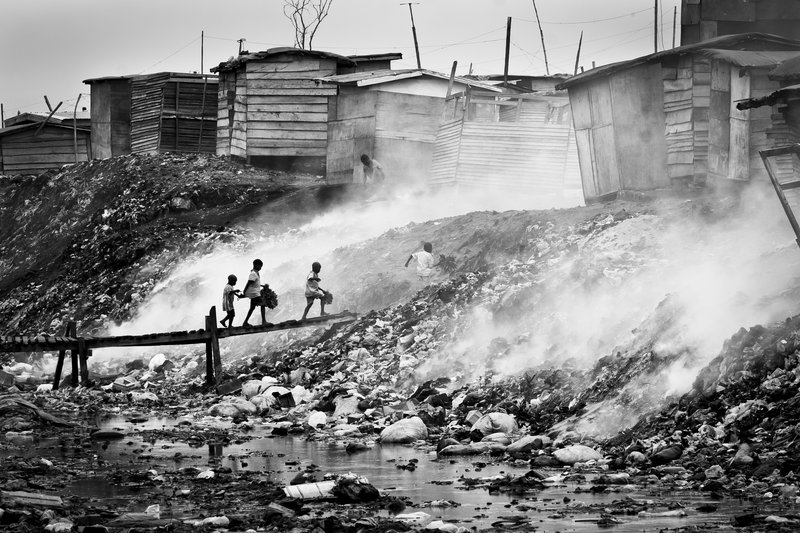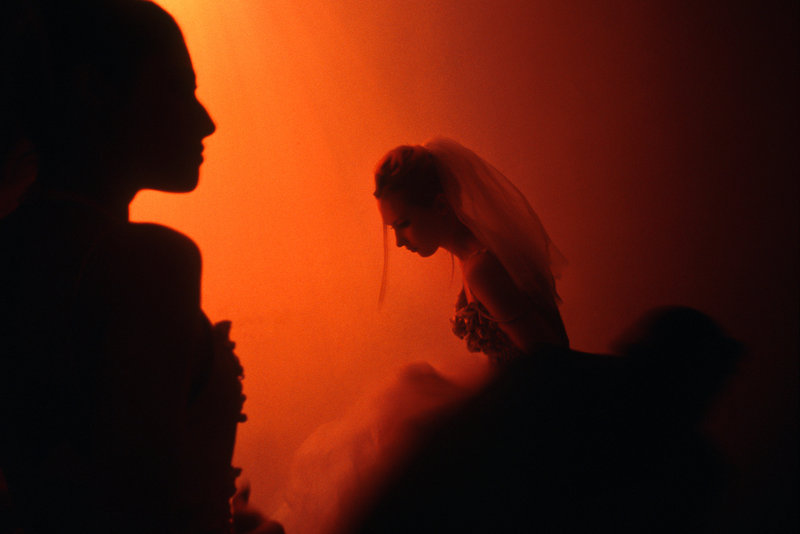PORTLAND – Journalist Bruce Strong was taught to be as objective as possible. A photographer, he knew he was responsible for learning the background of a story, shooting what he saw and leaving his personal views out of his reportage.
That philosophy is well and good, but leaves out an important consideration: Strong has a heart.
“When I meet someone, they create an impression in my heart that I then turn around and photograph. I can’t leave myself out of that process,” he said. “I capture that impression and then send it on to other people. They form an opinion and form an impression, and then they take action. That’s a powerful process.”
Strong, who teaches photography and multi-media storytelling at Syracuse University, is showing a collection of heart-felt photography this month at the Salt Institute for Documentary Studies on Congress Street.
In a wide-ranging exhibition, Strong exhibits color and black-and-white images that he has taken over the span of his career in places near and far, from California to Tibet, from New Jersey to Nepal.
He calls the exhibition “Impressions: Finding Truth Beyond the Facts.”
Curiously, Strong has chosen not to document his photos. He has placed them on the wall at Salt without explaining them. There are no captions, no dates, no explanation of where they were shot or their circumstance. The wall-text portion of this exhibition is scant.
Instead, he affixed a tablet and pen below each photo, and encouraged viewers to write their own impressions.
“The images take on a new life based on what other people are writing. I thought this was a way to make it more interactive, and a different way of dealing with a gallery show, both artistically and in terms of storytelling, and also journalistically,” he said.
“I am trying to cross those boundaries, and my hope is that by doing a gallery show in this way, it might move people out their traditional comfort zones and interact with the images in a very different way.”
Strong equates the writing tablet to a comment field on a blog, where readers can leave their thoughts. That opportunity rarely exists in a gallery space, except perhaps in a comment book.
But this technique is far more immediate.
“I am interested in what people see when they see the images, without the smells and the sounds,” he said. “Some of the excitement of this show is the feedback we will get through the placards to allow us to see what others see in the work I am producing.”
He achieved his hope. Viewers have been effusive, and remarkably honest and insightful, in their writing.
To accompany a dramatic portrait of a blind woman, with her eyes blurry and empty and lost, people have written things such as “Holy Moly” and “What do you see when you don’t let yourself look away?”
Strong has a black-and-white photo of a man alone in a cell. The wall is covered with hand-written notes left behind by previous prisoners.
The viewer captions are simple and eloquent. “Alone,” says one. “You are never alone,” counters another.
In a shanty town in Ghana — we know the location, because Strong revealed it in an interview — we see a group of children crossing a rickety bridge that spans an urban stream. The river bed is strewn with trash and human waste. The conditions are beyond deplorable, and the photo almost reeks with the stench.
“I don’t know if people in the developed world realize how privileged we are just to have someone come pick up our trash,” writes one observer.
Another offers, “The bridge to nowhere.”
Perhaps the most affecting image in “Impressions” is a photograph of an elderly couple. In an interview, Strong revealed the couple’s identities as his grandmother and grandfather, Oma and Opa. He has Alzheimer’s, and she has spent her entire life giving herself to the care and prosperity of her family. The image on view at Salt is just one of many in a photo series of the couple that Strong titled “Oma & Opa.”
In this darkest time, Oma has chosen not to turn her husband’s care over to a hospital staff. She tends to her husband’s every need in the comfort of their home.
In this image, we see Opa seated at a commode by the bed, his head bowed with the resignation of his situation. His wife, with apron smock draped around her and a bowl of ice cream in hand, plants a loving kiss on his forehead.
It’s a remarkably affectionate gesture.
The reader captions capture the poignancy of the moment. “Through sickness and health,” writes one person. “When Papa was sick, I wish he had this love,” writes another.
Donna Galluzzo, Salt’s executive director, said she approached Strong about coming to Portland to exhibit his work. His expertise as a visual storyteller and ability to work in multi-media disciplines blends perfectly into Salt’s mission of documentary storytelling. A handful of Salt graduates studied with Strong, and recommended him to Galluzza.
Strong was happy to be asked to come to Portland to show his work. He has lived and worked all over the world, and has family in New Hampshire. He has always considered New England home, but has never exhibited his work in Maine. When Salt extended the opportunity, he gladly accepted.
“He makes beautiful images,” Galluzzo said. “He has a wonderful eye. He’s a very smart photographer. His use of color is perfect, and he also works well with black and white.
“He’s an outstanding example for our students.”
Staff Writer Bob Keyes can be contacted at 791-6457 or at:
bkeyes@pressherald.com
Send questions/comments to the editors.







